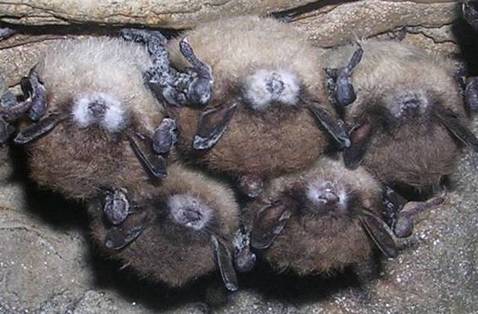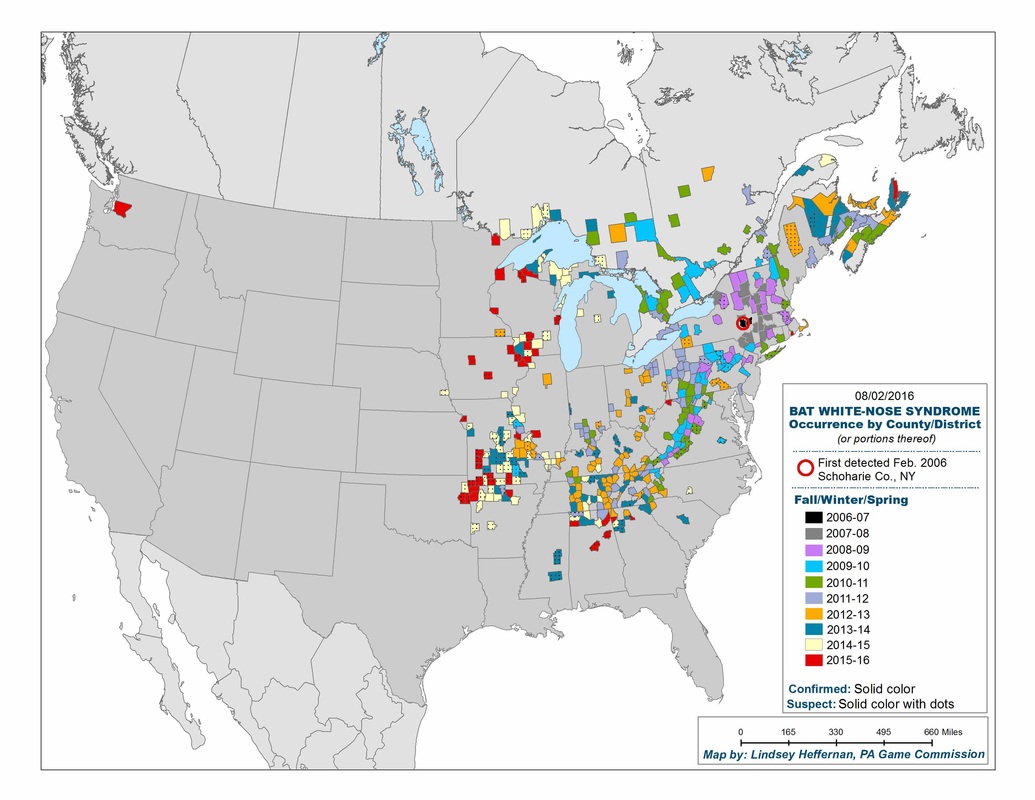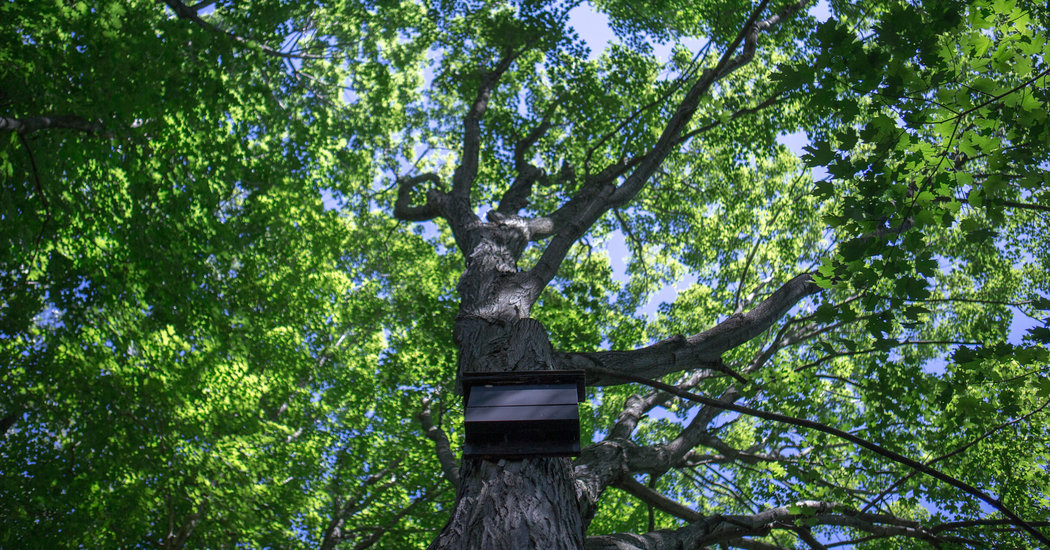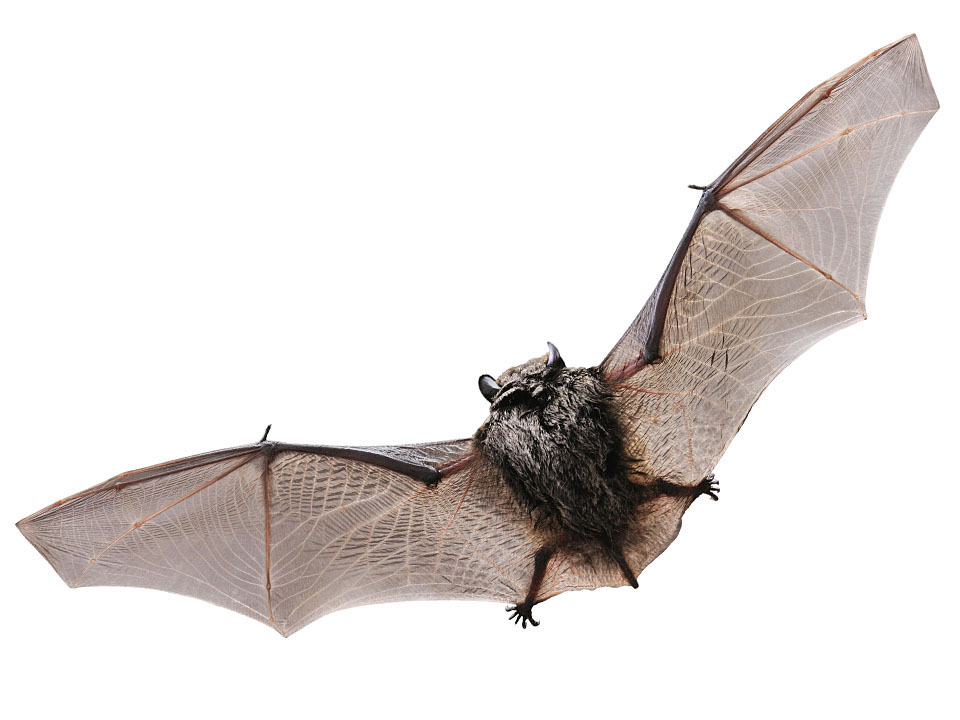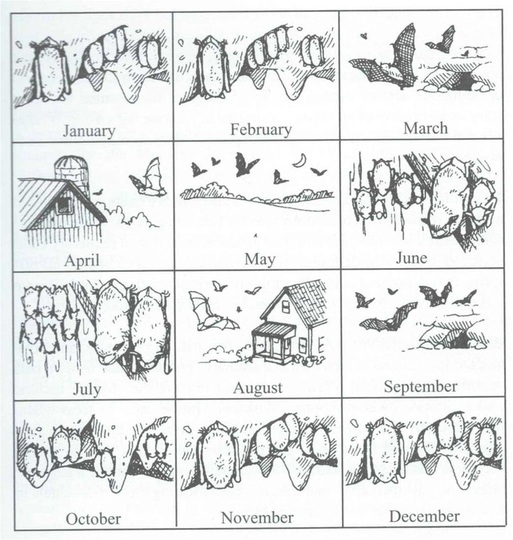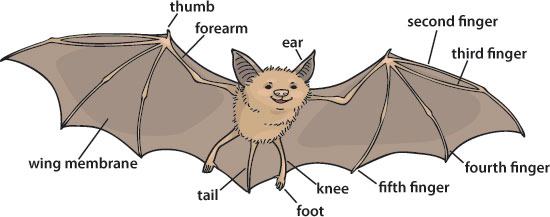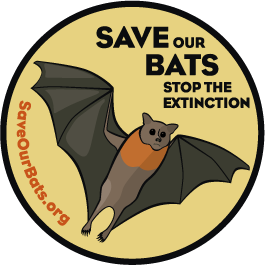|
The Division of Wildlife uses information from Bat Acoustic Survey Monitoring to help track our bat species, population rates and document the progression of White-Nose Syndrome (WNS). Sadly, signs of WNS has officially shown up far west in the state of Washington as of 2016.
Find out up-to-date information about White-Nose Syndrome (WNS), the deadly disease that affects North American bats by cilcking on the black box below. Extensive groups of state, federal, tribal, university, and non-governmental partners are helping minimize the impacts of White-Nose Syndrome. They also need our help! #Save the Bats
Ohio Department of Natural Resources - Contact Information:
www.whitenosesyndrome.org/partner/ohio-department-natural-resources In the winter of 2006-07, the New York Department of Environmental Conservation found approximately 10,000 bats of the genus Myotis (little brown bats, M. lucifugus, and Indiana bats, M. sodalis) dead and dying in four caves in New York. Since 2006, White-Nose Syndrome (WNS) has killed millions of bats in eastern North America, including several Myotis species, Perimyotis subflavus (Tri-colored bat), and Eptesicus fuscus (big brown bat). In March 2011, the first Ohio case of WNS was confirmed in an abandoned mine in Lawrence County, Ohio. Several counties in Ohio have been confirmed as WNS positive, including Lawrence County in 2011, 5 counties were added in 2012 (Geauga, Summit, Cuyahoga, Portage, and Preble), and 10 counties added in 2013 (Medina, Jefferson, Union, Wayne, Ashland, Athens, Clinton, Madison, Warren, and Sandusky). Updates on WNS in the State of Washington: wdfw.wa.gov/conservation/health/wns/ www.whitenosesyndrome.org/news/deadly-bat-fungus-washington-state-likely-originated-eastern-us
Bats Truly Need Our Help:
Devouring 1,000 Mosquitoes nightly; Bats are now welcome guests as "Zika Fears Rise": www.nytimes.com/2016/07/05/nyregion/devouring-1000-mosquitoes-an-hour-bats-are-now-welcome-guests-as-zika-fears-rise.html?_r=0
Why should you put up a bat house?
Bat houses benefit bats, you, your family, communities, farmers, gardeners and the ecosystem as a whole.
See Additional Bat House Designs:
—Bat Facts:
Over 1,000 Species Worldwide —45 species native to U. S. —11 species in Ohio (2016) —The only true flying mammal —Primarily nocturnal, but most times can be seen flying about in the early evening (crepuscular)
Teachable Moments:
The Save Lucy Campaign was created to raise awareness of White-Nose Syndrome
and its devastating impact on North American Bats.
Creatures of the Night
The Order name ‘Chiroptera’ means “hand-wing”
—Order Chiroptera =“hand wing” —Megachiroptera =“large “bats: Found in tropics - —large fruit bats/flying foxes —Microchiroptera =“small” bats: all bats in U.S. —Varied diets and ID characteristics
1 Comment
|
Details
Author:
|
|
|
Contact:PHONE: (513) 695 - 1337
EMAIL: wcswcd@gmail.com HOURS: Monday - Friday 7:30am - 4:00pm (except holidays) Connect:Warren County Soil & Water Conservation District Copyright © 2016
Warren SWCD Privacy Notice. Emails are serviced by Constant Contact. Constant Contact's Privacy Notice. |
